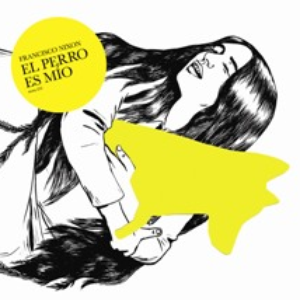Museo Británico
Francisco Nixon Lyrics
Jump to: Overall Meaning ↴ Line by Line Meaning ↴
Cuando yo no esté más
Por el campo sobre un caballo zampo
Aparte hoy tengo dinero y no se
Cuando voy a volver a tener algo
Puedes decir que eres la hija del juez
Pero no que vas conmigo a diario
Y a bailar que son las fiestas del barrio
Y si te vas
Donde más duele te vas
Y si te vas
Tu ya no vuelves
Y si te vas
Donde más duele te vas
Y si te vas
Tu ya no vuelves
Puedes correr
Cuando yo no esté más
Por el campo sobre un caballo zambo
Aparte hoy puedo invitarte a dormir
El mosaico es del museo británico
Y si te vas
Donde más duele te vas
Y si te vas
Tu ya no vuelves
Y si te vas
Donde más duele te vas
Y si te vas
Tu ya no vuelves
Y si te vas
Donde más duele te vas
Y si te vas
Tu ya no vuelves
Y si te vas
Donde más duele te vas
Y si te vas
Tu ya no vuelves
Prueba a correr
Cuando yo no esté más
The lyrics of Francisco Nixon's "Museo Británico" seem to revolve around a complicated relationship, perhaps a love affair. The chorus "Y si te vas, donde más duele te vas, y si te vas, tú ya no vuelves" translates to "And if you go, where it hurts the most is where you go, and if you go, you won't come back." It suggests that the person singing the song is warning someone that if they leave, they will be gone for good and it will hurt.
The verses suggest that the person singing has money today and can invite the other person to dinner and dancing since it is a holiday in the neighborhood. The lyric, "puedes decir que eres la hija del juez, pero no que vas conmigo a diario" translates to "you can say that you're the judge's daughter, but not that you're with me every day." This line implies that the person singing is perhaps involved with someone they shouldn't be with, or someone they don't want to publicly associate themselves with.
The lyrics also mention a "mosaico del museo británico" or "mosaic from the British Museum." It's unclear what this refers to, but it could be a sentimental object that the person singing and the other person share, or perhaps a reference to a past trip to London. Overall, the song seems to be about a relationship where one person has more power or control, and the other person is warned that if they leave, they won't be coming back.
Line by Line Meaning
Prueba a correr
Try to run
Cuando yo no esté más
When I'm no longer here
Por el campo sobre un caballo zampo
Through the countryside on a lame horse
Aparte hoy tengo dinero y no se
Cuando voy a volver a tener algo
Besides, today I have money and I don't know when I'll have something again
Puedes decir que eres la hija del juez
You can say you're the judge's daughter
Pero no que vas conmigo a diario
But not that you go with me every day
Aparte hoy puedo invitarte a cena
y a bailar que son las fiestas del barrio
Besides, today I can invite you to dinner and to dance at the neighborhood parties
Y si te vas
Donde más duele te vas
Y si te vas
Tu ya no vuelves
And if you leave, you go where it hurts the most, and if you leave, you won't come back
Puedes correr
Cuando yo no esté más
Por el campo sobre un caballo zambo
You can run when I'm no longer here, through the countryside on a lame horse
Aparte hoy puedo invitarte a dormir
El mosaico es del museo británico
Besides, today I can invite you to sleep, the mosaic is from the British Museum
Prueba a correr
Cuando yo no esté más
Try to run when I'm no longer here
Writer(s): Ricardo Vicente Loenzo
Contributed by Kennedy F. Suggest a correction in the comments below.
